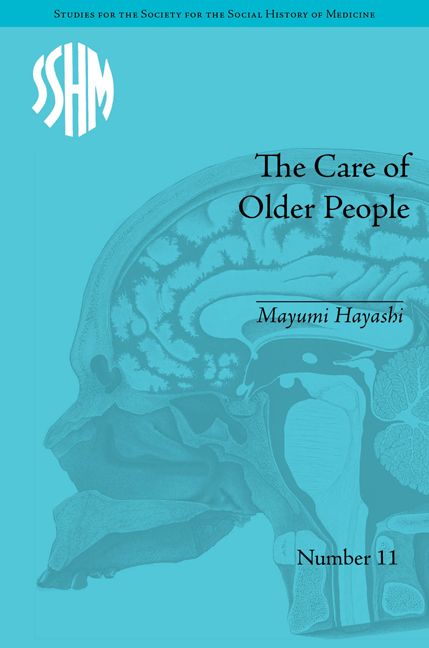1 - The English Context
Summary
This chapter and Chapter 2 give an overview of the development of residential care for older people in England and Japan respectively, tracing it to its origins in each country. Each focuses on statutory residential care provision under the country's Poor Laws and post-war welfare arrangements. This chapter discusses the English workhouse, the legacy and stigma associated with it, post-war statutory residential care provision under the 1948 National Assistance Act, and finally alternatives.
Origins: The Poor Law Workhouse from 1601
Forms of institutional care for the needy in England, including the destitute, sick or disabled elderly, can be traced back to the Middle Ages, when monastic communities ran infirmary almshouses for the sick and houses of pity for the destitute. This ended with the dissolution of the monasteries under Henry VIII between 1536 and 1539, but was revived in different form with the establishment first of poor houses or houses of correction and later with the 1834 Poor Law. By that date voluntary hospitals were providing medical care for the acute sick poor, but not longer-term institutional care for the chronic sick or infirm, including the elderly. The latter, along with paupers of all ages, sometimes received alms or were granted allowances or indoor relief, increasingly in the ‘mixed’ workhouses established by the 1834 Poor Law. By that date voluntary hospitals were providing medical care for the acute sick poor, but not longer-term institutional care for the chronic sick or infirm, including the elderly. The latter, along with paupers of all ages, sometimes received alms or were granted allowances or indoor relief, increasingly in the ‘mixed’ workhouses established by the 1834 Poor Law. It was not until the early twentieth century that the special needs of older people were acknowledged, with more places provided and separate legislation.
- Type
- Chapter
- Information
- The Care of Older PeopleEngland and Japan - A Comparative Study, pp. 13 - 38Publisher: Pickering & ChattoFirst published in: 2014

